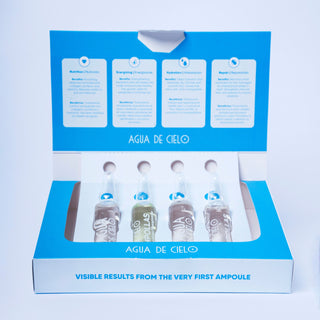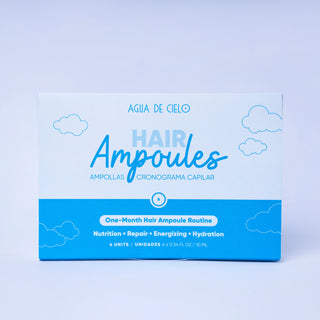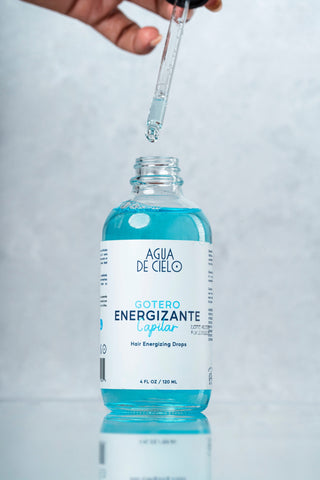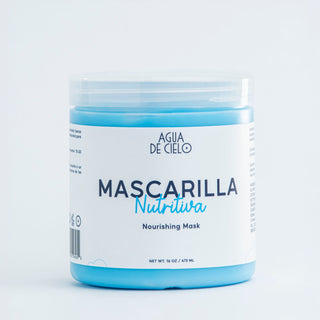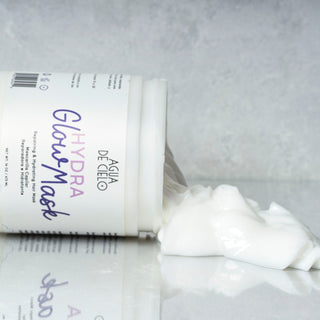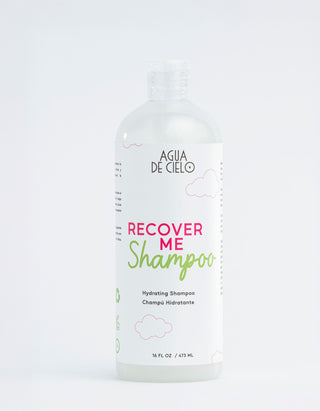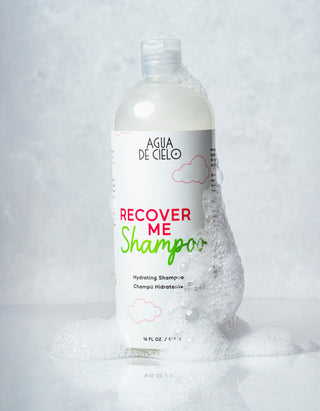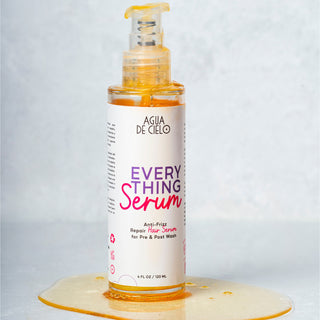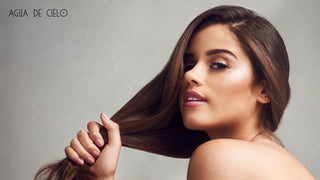If you want that beautiful, healthy-looking hair you see in those beauty commercials—then learning about how to know your hair type and properly care for it is your first step.
Every hair and scalp is different and needs its own care and the right products to keep it healthy and strong.
Giving your hair the right products for your hair can boost your hair—while giving it the wrong ones can leave you with an ineffective hair care routine and wasted money.
Thankfully, we’ve outlined everything you need to know about hair types, so read on to learn how to know yours.
Table of Contents
Why Learning How to Know Your Hair Type Is Important
Learning how to know your hair type is your starting point to creating your own personalized hair care routine. Have you ever wondered why your hair is so different from your best friend's? Or why the shampoo that works for your sibling doesn't seem to be working for you?
While no two heads of hair are identical, there is a method to the madness. But they do have something in common. That they are defined from within.

What Is a Hair Type?
Much like your skin type, everyone has a hair type. Hair type is the term used to describe the shape, pattern, and thickness of your strands.
Have you ever heard of the phrase "it all starts from within"? Well, with your hair, it all starts at the root. The shape of your hair follicles determines your hair type. Oval or flat follicles are the reason behind your bouncy curls, while circular ones give you straight strands. Also, the strand's thickness affects how it can be styled and maintained.
For example, if you have fine hair, it might be a bit stubborn, refusing to hold a curl for too long. While thick hair might need a little extra push to change its natural curl pattern.
And here's the catch: your hair might not fit into only one category, and that's completely alright! Rocking more than one hair texture, especially in your natural state, is common and also beautiful.
Getting to Know the Different Hair Types
Did you know there are 12 different types of hair?
Let's talk about the Andre Walker Hair Typing System, aka The Hair Chart. It may sound boring, but it’s key to learning how to know what type of hair you have. It's a hair typing method that uses letters and numbers to categorize hair texture, shape, and thickness. Picture it as the DNA of your hair.
The system consists of numbers and letters representing hair type and width. The numbers range from 1 to 4, with 1 being straight hair and 4 being coily hair. The letters A, B, and C, mean the width of your strands, with A being thin, B as medium, and C as thicker.

Type 1 Hair: The Straight Shooters
Type 1 hair is straight and reflects the most sheen and is resilient. It tends to be the shiniest of hair. The oil from your scalp has a straight path down the hair shaft, making it prone to oiliness. On the bright side, it can also help your scalp receive key nutrients.

- Type 1A Hair: This hair type is very soft, shiny, and smooth. It's thin, has a noticeable lack of body, and can struggle to hold curls. Using lightweight products and volume-boosting hair mousse can be beneficial. It’s the rarest hair type.
- Type 1B Hair: This type is medium thickness and volume. It can hold curls better than 1A, and a good variety of hairstyles and hair products work well with it.
- Type 1C Hair: This hair type is the coarsest among Type 1. It's thick and full-bodied but can be a bit more difficult to style due to its resistance to curling. A strong-hold hairspray or cream can help maintain styles. This type is also prone to frizz.
Type 2 Hair: Wavy Wonders
Type 2 hair is wavy and lies somewhere between straight and curly. It forms an "S" shape, tends to be a bit resistant to styling, and is prone to frizz.

- Type 2A Hair: This type has a fine, barely-there tousled texture with a light wave. Use lightweight products to avoid weighing it down and try to use a volume-boosting mousse or gel.
- Type 2B Hair: Medium-textured 2B hair forms more distinct "S" shaped waves and can frizz easier. Try using texture-enhancing sprays to boost the wave pattern.
- Type 2C Hair: Coarser in texture, 2C hair has defined, wavy "S" patterns and is prone to frizz. Regular conditioning and the use of anti-frizz products can help maintain its look.
Type 3 Hair: Curl Code
Type 3 hair is curly and can look full, defined, and gorgeous, and is full-bodied. Weather could be your worst enemy since humidity can bring you a whole lot of frizz. So sorry for all my curl heads living in the south. But when you take care of these curls, they can look mighty ravishing.

- Type 3A Hair: This type has shiny and loose curls. Regular moisture treatments and use of hydrating products can help enhance their definition and shine.
- Type 3B Hair: These curls are tighter and more voluminous. They benefit from humectants, which attract and hold onto moisture, and moisturizing products to combat dryness.
- Type 3C Hair: Known for its tight, springy curls, 3C hair is usually high-density. A good hair care regimen for this type includes co-washing and using creamy cleansers and moisturizing styling creams.
Type 4 Hair: The Coily Club
Type 4 hair is coily hair, also known as kinky hair, and is a more compact but less defined version of curly. It is often dry and spongy in texture and can experience a lot of shrinkage and is prone to damage.

- Type 4A Hair: This hair type is full of tight coils. It retains moisture fairly well but still needs extra hydration. A leave-in conditioner and regular deep conditioning treatments work wonders for 4A hair.
- Type 4B Hair: 4B hair has a Z-shaped pattern and a cotton-like feel. The hair bends with very sharp angles and needs plenty of moisture and gentle treatment.
- Type 4C Hair: This hair type has tight kinks and is the most fragile hair type. It can be very dense and experiences severe shrinkage. A robust moisturizing routine with regular use of oils and creams can help to keep 4C hair healthy and strong.
How to Know What Type of Hair You Have
Know that you have learned about the different hair types, you probably already have an idea which one is yours. But to be certain, there are a few different tests we can do to find out yours.
Finding out your hair texture
Now that you know about all four hair textures and their structures, it's time to find out yours (in case you don’t already know it). So it’s time to play a little game…
For hair texture, you’ll want to
- Wash your hair
- Leave it free of products
- Let it air dry
Now depending on how it dries will determine your hair type:
- Straight hair: It dries straight without a wave, bend or curl
- Wavy hair: It dries with a “S” shape or slight curl
- Curly hair: It dries with a curl pattern, with corkscrew curls or springy ringlets but less dense than coily hair
- Coily hair: It dries with a curl pattern but with dense zig-zag patterns and spirals. Another hint could be that you’ll notice this type of hair shrink when it goes from wet to dry.
Finding out your hair thickness
Now that you know your hair type, it's time to know your hair thickness. Enter the Thread Test.
An easy DIY way to understand your hair texture and thickness is through the thread test. Simply take a strand of hair from your hairbrush and compare it to a length of sewing thread. Is your hair finer than the thread? Then you're "fine." Thicker? You're in the "coarse" category. It's a fun and quick way to understand your hair type.
Now you should be able to identify your hair type. Read along to start knowing which hair care products will work for you.
Three Products We Recommend for All Hair Types
Not sure where to start on your search for the right products? Everyone is different and the right products depend on your hair type, hair problems, and goals. One thing is certain, these next three products are a must for anyone's hair care routine.
- First, we recommend our Everything Serum 3 in 1, which is an organic hair serum made with rich anti-oxidants and oils. This powerful elixir protects your hair and keeps it healthy.
- For a powerful hair mask, try our Hydra Glow Hair Mask, which helps repair damaged hair, reduce frizz, and prevent split ends. It contains biotin, Asian rice, and wheat germ.
- Finally, our Hair Ampoules Set will give your hair and scalp a potent dose of essential nutrients for nutrition, hydration, and repair. One ampoule treatment will leave you with jaw-dropping results.
At Agua de Cielo, we make products that work for all hair types. They're also free of harsh chemicals including sulfates, parabens, salts, silicones, and more.
Conclusion
In conclusion, remember that hair typing is not about creating a perfect hair hierarchy. It's about understanding your hair's unique characteristics - its density, diameter, porosity, oiliness, elasticity, and moisture. Embrace your hair type and treat it with the love it deserves, and you'll have healthy, beautiful hair!
So next time you wonder, "What type of hair do I have?", you'll know the answer. And remember that Agua de Cielo showed you the way. And more importantly, you'll know how to care for it. So you can make fewer trips to the expensive salon and instead grow your hair healthier from within. Now, that's what we call hair enlightenment!
Stay tuned for Part 2: Let's Talk Hair Porosity and Why You Need to Know It.
Frequently Asked Questions
What are the 4 types of hair?
- There are four main hair types: Type 1 is straight, Type 2 is wavy, Type 3 is curly, and Type 4 is coily or kinky.
How do I identify my hair type?
- To identify your hair type, wash your hair and let your hair air dry without products. Then observe its natural texture.
- Straight hair remains straight (Type 1)
- Wavy hair forms an S-shape (Type 2)
- Curly hair forms defined loops (Type 3)
- Coily hair has tight curls or zigzags (Type 4).
What is the rarest hair type?
- Type 1A, which is the straightest and finest, is the rarest hair type.
What hair is the hardest to style?
- Coily or kinky hair (Type 4), especially 4C, can be the hardest to style. Mainly due to its fragile and tight coils.
Which hair type is the strongest?
- Coarse hair (found in any hair type) is normally the strongest due to its thicker strands.
How do you tell if your hair is thick or thin?
- Take a strand of hair from your hairbrush and compare it to a length of sewing thread. Is your hair finer than the thread? Then you're "fine." Thicker? You're in the "coarse" category. It's a fun and quick way to understand your hair type.
Who created the hair type chart?
- The hair type chart was created by Andre Walker in 1997.



